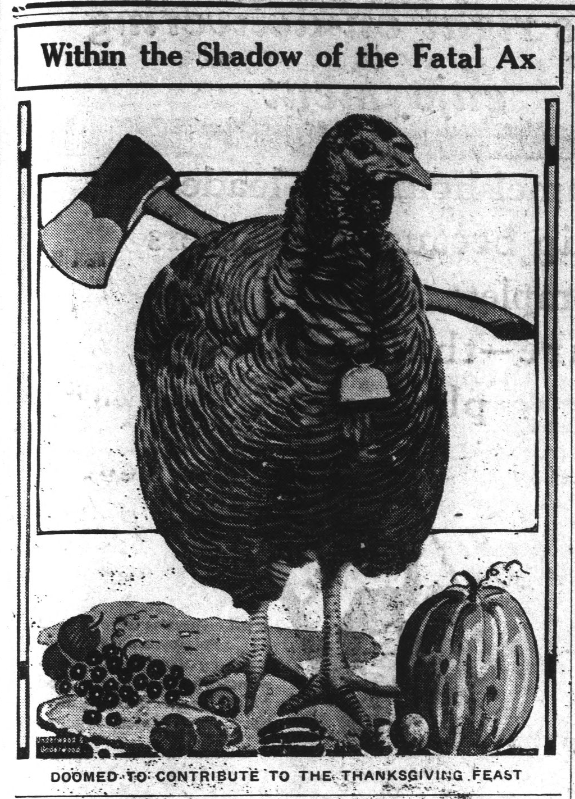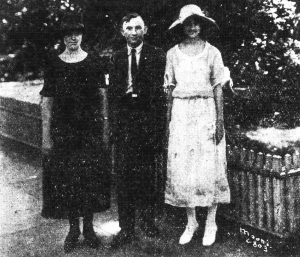Thanks to our partner East Carolina University, the 1949 Farmville High School yearbook, Archway, has joined volumes covering 1960-1971 on DigitalNC. To view all the Farmville High School yearbooks, click here and visit North Carolina Yearbooks to view all the yearbooks on our site.
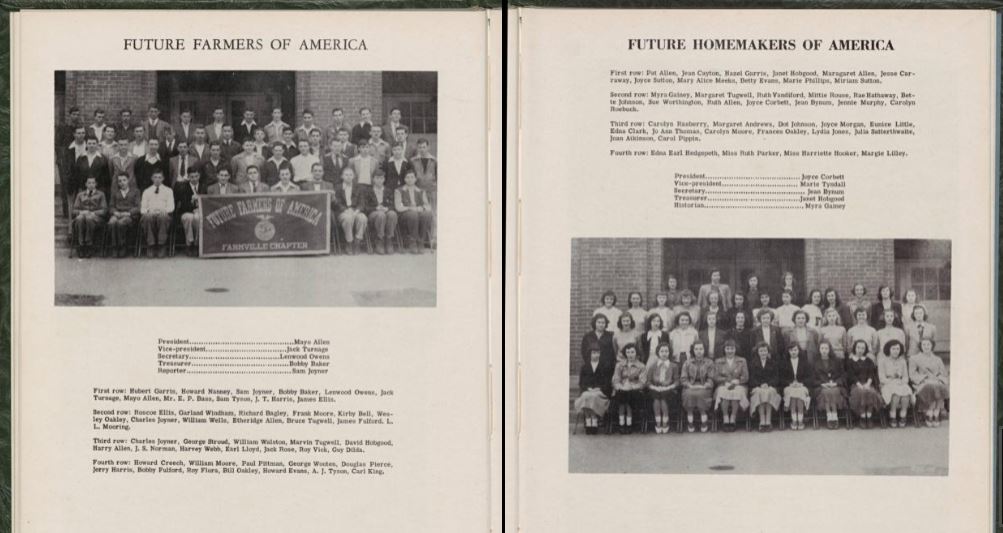
Future Farmers of America and Future Homemakers of America chapters at Farmville High School, 1949
To view other materials from East Carolina University, visit their partner page.
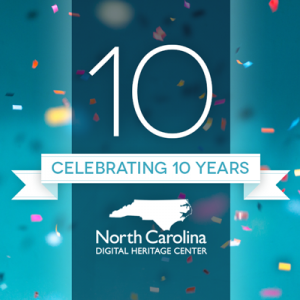 It’s DigitalNC.org’s 10th birthday! Though we had hoped to be in the office celebrating, we’re still taking time to look back at years of hard work and the collaborative spirit that makes the North Carolina Digital Heritage Center (NCDHC) what it is!
It’s DigitalNC.org’s 10th birthday! Though we had hoped to be in the office celebrating, we’re still taking time to look back at years of hard work and the collaborative spirit that makes the North Carolina Digital Heritage Center (NCDHC) what it is!
To date, NCDHC has partnered with 273 libraries, museums, alumni associations, archives, and historic sites in 98 of North Carolina’s 100 counties and we’re growing all the time. Our website currently includes 4.2 million images and files. We share this accomplishment with every institution we’ve worked with. We’d never have gotten to 10 years without staff (permanent, temporary, and student!), our partners, or the network of colleagues all over North Carolina who have encouraged, advised, and supported our work.
As we approached our anniversary, we realized that our website lacked a synopsis of how NCDHC came to be, and our history. So read on for a brief look at how we got started and our major milestones.
Our History
The North Carolina Digital Heritage Center was one outcome of a comprehensive effort by the state’s Department of Cultural Resources (now the Department of Natural and Cultural Resources) to survey and get a broad overview of the status of North Carolina cultural heritage institutions. That effort was entitled NC ECHO (North Carolina Exploring Cultural Heritage Online) and was funded by the Institute of Museum and Library Services (which also supports us – thanks IMLS). A major goal of NC ECHO was a multi-year needs assessment. NC ECHO staff visited hundreds of cultural heritage institutions throughout the state to collect data and interview curators, librarians, volunteers, archivists, and more. Many of our partners still remember their visits!
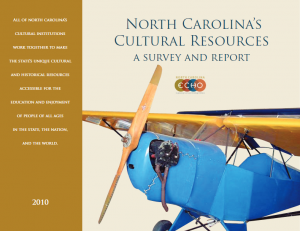 Data collected at these site visits was combined with survey responses to reveal a “state of the state,” summarized in a 2010 report, cover pictured at right. The assessment revealed a lot but, specific to digitization, staff found that nearly three-quarters of the 761 institutions who completed the survey had no digitization experience or capacity. Members of the Department of Cultural Resources (which includes the State Library, State Archives, and multiple museums and historic sites) began brainstorming with other area institutions about a way to help efficiently and effectively provide digitization opportunities. While the NC ECHO project offered digitization grants, workshops, and best practices, an idea emerged of a centralized entity that could assist institutions that didn’t have the capacity to do the work in house. The State Library of North Carolina and UNC-Chapel Hill Libraries joined together to create such an entity: the North Carolina Digital Heritage Center. The Center would be located in Chapel Hill, taking advantage of its central location and the digitization equipment and expertise already available in Wilson Special Collections Library. The State Library would provide funding, guidance, and ongoing promotion and support of the Center’s services.
Data collected at these site visits was combined with survey responses to reveal a “state of the state,” summarized in a 2010 report, cover pictured at right. The assessment revealed a lot but, specific to digitization, staff found that nearly three-quarters of the 761 institutions who completed the survey had no digitization experience or capacity. Members of the Department of Cultural Resources (which includes the State Library, State Archives, and multiple museums and historic sites) began brainstorming with other area institutions about a way to help efficiently and effectively provide digitization opportunities. While the NC ECHO project offered digitization grants, workshops, and best practices, an idea emerged of a centralized entity that could assist institutions that didn’t have the capacity to do the work in house. The State Library of North Carolina and UNC-Chapel Hill Libraries joined together to create such an entity: the North Carolina Digital Heritage Center. The Center would be located in Chapel Hill, taking advantage of its central location and the digitization equipment and expertise already available in Wilson Special Collections Library. The State Library would provide funding, guidance, and ongoing promotion and support of the Center’s services.
At its beginning, the Center’s staff digitized small collections of college yearbooks, needlework samplers, postcards, and photographs and made them available through DigitalNC.org. They went to speak with organizations interested in becoming partners, and began taking projects for digitization. Here’s a list of NCDHC’s earliest partners, who came on board during late 2009 and 2010.
Though we’re not positive of the exact date, we believe DigitalNC.org launched on or near May 12, 2010. Here’s a look at that original site!
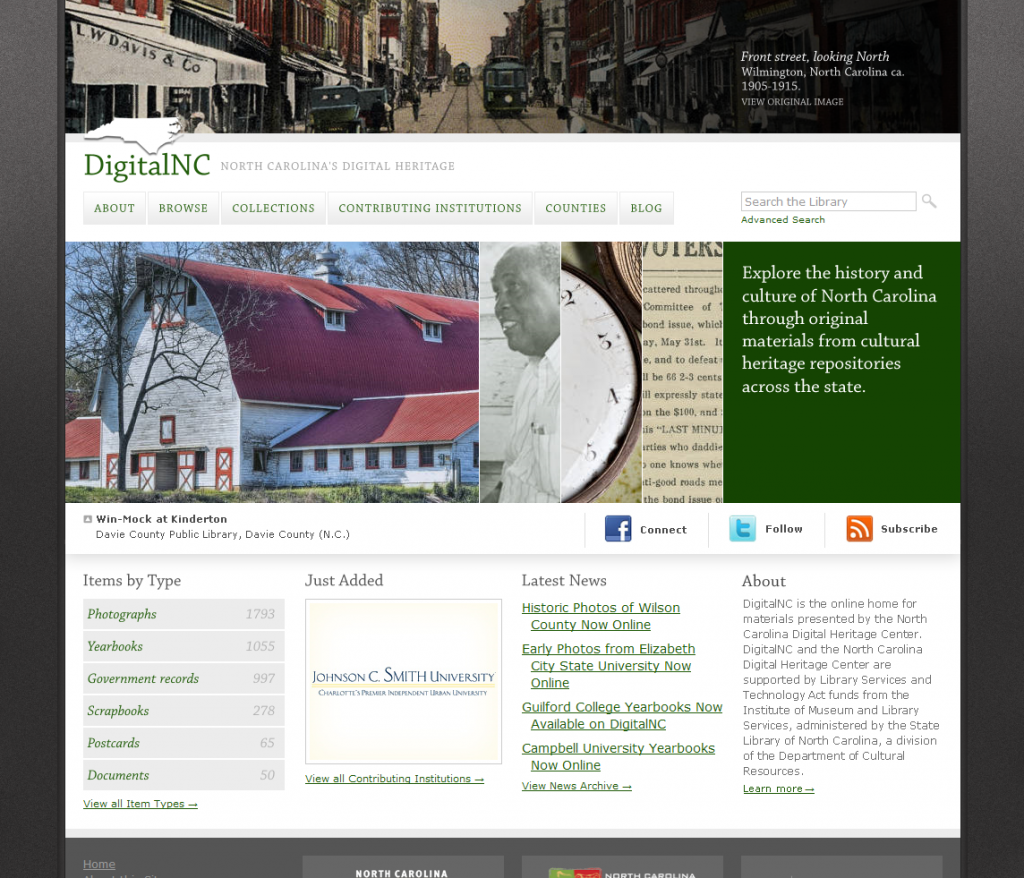
In 2011, word about the Center spread. Staff started responding to demand from partners, incorporating newspaper digitization. In late 2012, also in response to popular demand, the Center began digitizing high school yearbooks. Yearbooks and newspapers are some of the most viewed items on DigitalNC, and they remain a significant portion of our work to this day.
In 2013, NCDHC joined the Digital Public Library of America (DPLA) as North Carolina’s “service hub.” The DPLA collects information from digitized collections all over the nation and provides it together in one searchable interface at dp.la. Because of our participation, users can browse and search for collections from North Carolina alongside items from institutions around the country.
Throughout the years, we’ve tried to expand services to fit our partners’ goals. In 2015, we trialed an audiovisual digitization project that incorporated the first films into DigitalNC. Today, we partner with the Southern Folklife Collection at Wilson Special Collections Library to provide audio digitization on an ongoing basis. In 2016, we added a new partner category – alumni associations – to support more digitization of African American high school yearbooks and memorabilia. The following year, we announced a focus on digitization of items documenting underrepresented communities. We also started going on the road with our scanners! For institutions that don’t have the staff time or resources to travel to Chapel Hill, we offer to come for a day or two and scan on site.
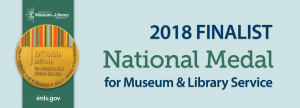 2018 and 2019 saw several major milestones. We were nationally recognized as an Institute of Museum and Library Services National Medal finalist, and we began a major software migration. Both were a tribute to the size and extent of our operation, though in different ways. As we’ve approached our 10th anniversary we’ve focused on working with partners in all 100 of North Carolina’s counties. Whether you’re rural or metropolitan, we believe your history is important and should be shared online.
2018 and 2019 saw several major milestones. We were nationally recognized as an Institute of Museum and Library Services National Medal finalist, and we began a major software migration. Both were a tribute to the size and extent of our operation, though in different ways. As we’ve approached our 10th anniversary we’ve focused on working with partners in all 100 of North Carolina’s counties. Whether you’re rural or metropolitan, we believe your history is important and should be shared online.
One of the ways we’re commemorating this anniversary is to ask our partners and stakeholders how they think we’ve impacted them and their audiences. Join us here on the blog in the second half of 2020 as we share these brief interviews, reflect, and celebrate. Thank you for reading, enjoy the site, and here’s to another 10 years of making North Carolina’s cultural heritage accessible online!
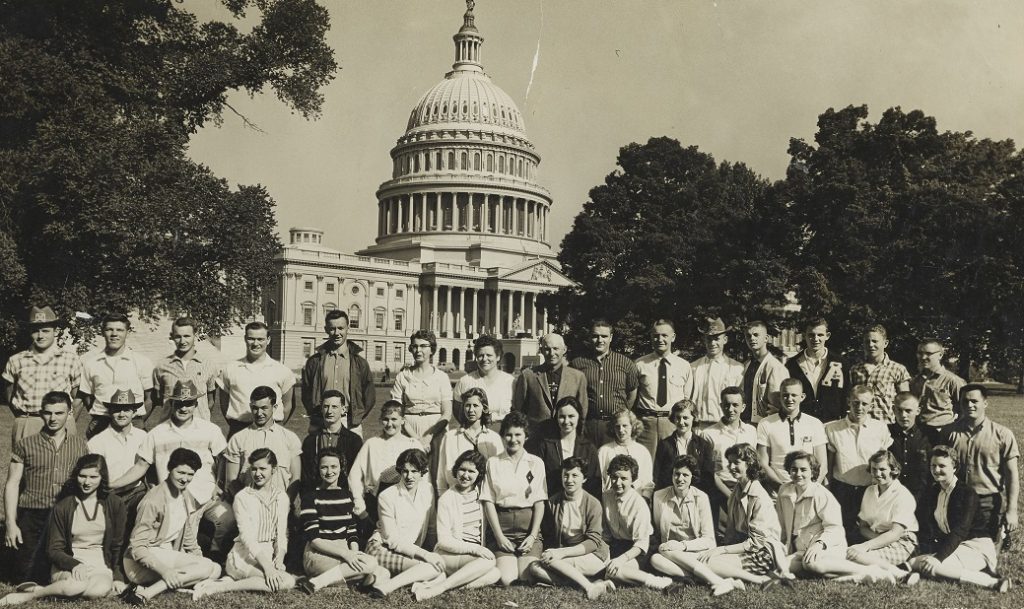
Part of the Ahoskie High School Senior Class of 1958 on a trip to Washington D.C.
DigitalNC is proud to welcome our new partner, the Ahoskie Woman’s Club. Located in Hertford County, having them as a contributor adds to our growing list of those who represent the Inner Banks region of the state. Their first contribution is a new batch of scrapbooks and materials, mostly containing newspaper clippings about Ahoskie High School, primarily dating from 1953 to 1961. This marks their first contribution to the collections on DigitalNC outside of yearbooks.
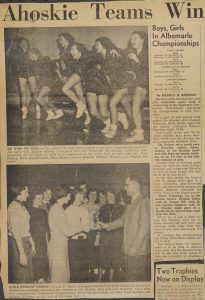
Newspaper clipping celebrating the championship victories of the Ahoskie sports teams
Most of these scrapbooks are arranged chronologically, including information about Ahoskie High School in the 1950s. Most articles are about the school football team, the Ahoskie Indians, and how they did those years. A few of the articles also relate to school clubs, other school sports teams, or school events themselves. On one page, newspaper clippings mention faculty positions being filled at Ahoskie High School, a speaker from East Carolina University coming to speak to Hertford County teachers, and the Ahoskia PTA holding film viewings.
These scrapbooks give us a glimpse of what the high school experience was like for Ahoskie High School students at the time. To see more from the Ahoskie Woman’s Club, please visit their partner page or check out their website.
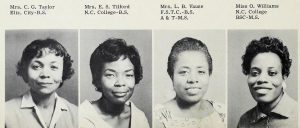
Faculty portraits in the 1963 Longhorn by Woodington High School.
More than 60 high school yearbooks provided by Eastern Carolina University are now up on DigitalNC. The schools represented are located across central and eastern North Carolina and include schools from Pitt County, Franklin County, Stokes County, Washington County, Hertford County, Lenoir County, Martin County, Halifax County, Wilson County, and Johnston County. The dates of these yearbooks range from 1927-1970. Together, they give an overview of secondary education across the state, with many of the editions covering the time surrounding desegregation efforts. These yearbooks include individual and class portraits as well photographs documenting activities, clubs, sports, and academics.

Senior portraits from the Kay Aitch Ess 1927 yearbook by Grainger High School
Follow the links below to browse yearbooks from the schools included in this batch:
To see more materials from our partner who provided these yearbooks, visit East Carolina University’s partner page, or take a look at their website.
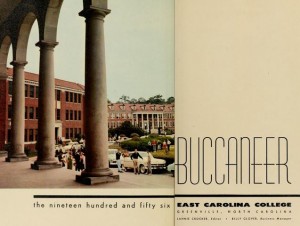
Title page from the 1956 Buccaneer, from East Carolina College, the most popular item on DigitalNC.org in 2014.
The North Carolina Digital Heritage Center had a great year in 2014. We continued to work with partners around the state on digitization projects and added a wide variety of material to DigitalNC.org, making it easier than ever for users to discover and access rare and unique materials from communities all over North Carolina.
As we look back on our work over the past year, I wanted to share some of what we’ve learned by looking at our website usage statistics. Like many libraries, the Digital Heritage Center uses Google Analytics to capture information about what’s being used on our website, who’s using it, and how they got there. While there are still lots of questions remaining about usage of DigitalNC, these stats do give us a lot of valuable information.
In 2014, more than 250,000 users visited DigitalNC.org, resulting in more than 1.8 million pageviews. While people visited our website from computers located all over the world, the greatest number by far came from North Carolina. That’s what we expected and hoped to see. More than 200,000 sessions originated in North Carolina, with the users coming from 388 different locations, ranging from over 18,000 sessions in Raleigh and Charlotte to a single visit from the town of Bolivia in Brunswick County (user location is determined by the location of their internet service provider, so this may not tell us exactly where our users are located, but it’s going to be close in most cases).
What did people use on DigitalNC? We were not surprised to find that the most popular collection remains our still-growing library of yearbooks. The North Carolina Yearbooks collection received more than 125,000 pageviews alone, followed by newspapers (44,000) and city directories (11,000). And we were pleased to learn that at least somebody is reading this blog, which received nearly 2,500 pageviews last year. The most popular blog post was our announcement about the digitization of a large collection of Wake County high school yearbooks.
We were also curious to see what single items were the most popular over the past year. The winner, with 438 pageviews, was the 1956 yearbook from East Carolina University. The second most popular was also from East Carolina, the 1930 Tecoan, followed by the 1961 yearbook from the Palmer Memorial Institute and the 1922 yearbook from Appalachian State University.
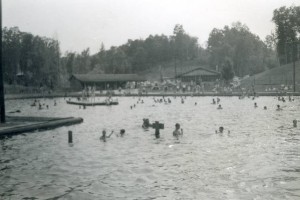
Lake Hideaway, ca. 1950s, the most popular photo on DigitalNC.org in 2014.
The most popular image on our site was from the Davie County Public Library: a black-and-white photo from the 1950s showing swimmers at Lake Hideaway in Mocksville. Other popular photos included a postcard showing the American Tobacco Company plant in Reidsville, N.C., a group of Stanly County students from 1912, and a portrait of Charles McCartney, the infamous “Goat Man” from the 1950s.
The variety of subjects, locations, and time periods in these photos is representative of the wide-ranging content available in North Carolina’s cultural heritage institutions and on DigitalNC.org. We are honored and excited to have a role in making this content accessible to everyone and look forward to sharing even more of North Carolina’s history and culture online in 2015.
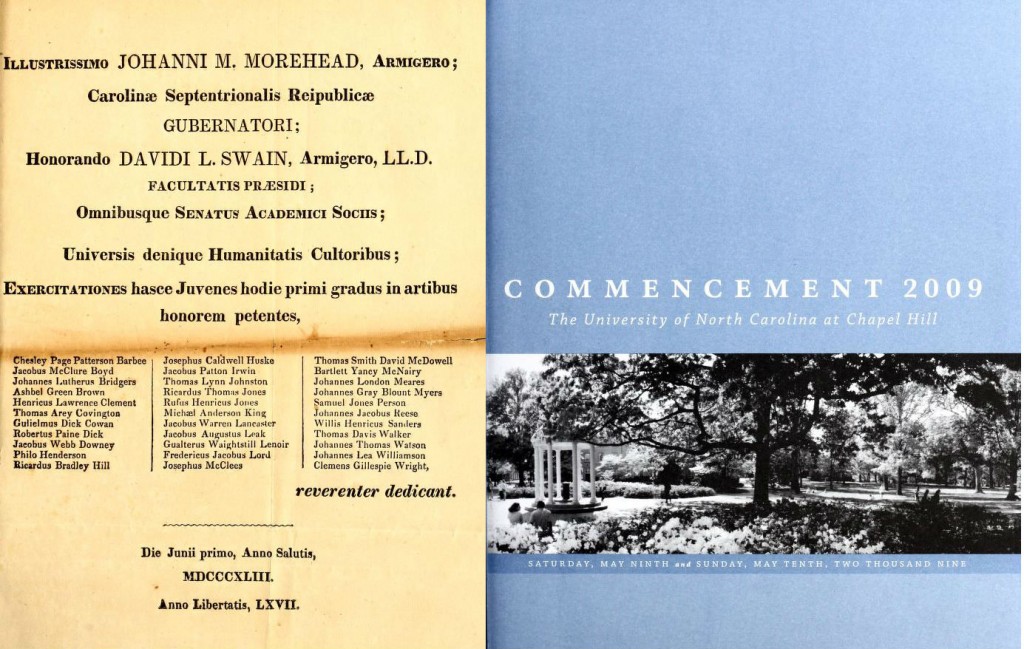
UNC-Chapel Hill commencement programs from 1843 and 2009.
We’re pleased to present the Commencement Programs of the University of North Carolina at Chapel Hill, from 1843 through 2009, now on DigitalNC.
From 33 names printed in a two-page document, written in Latin, to 80 pages describing accolades, honored guests, and university traditions, these programs have grown as much as the commencement event.
The 1843 program includes several names for which we know more from NCpedia and East Carolina University:
- John Luther Bridgers of Tarboro. He was a colonel in the Civil War, a farmer, and a lawyer.
- Robert Pain Dick of Greensboro. State Senator and North Carolina Supreme Court judge.
- Philo Henderson of Mecklenburg County. Poet who “was rather wild,” wrote a contemporary of his, “but never guilty of anything dishonorable.”
- Joseph Caldwell Huske of Fayetteville. Long-time rector at St. John’s Episcopal Church in Fayetteville, NC.
- Walter Waightstill Lenoir of Caldwell County. Class valedictorian, lawyer, and planter.
We also have catalogs, yearbooks, and other campus publications like the Basketball Blue Book and Carolina Magazine from UNC-Chapel Hill.
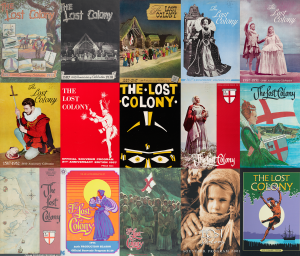
Many North Carolinians are familiar with the story of the lost colony, a group of English colonists brought to modern-day North Carolina by Sir Walter Raleigh who mysteriously vanished. Perhaps fewer are familiar with the symphonic drama The Lost Colony, which has been performed in Manteo, N.C. since 1937. Thanks to our partnerships with Wilson Library at UNC Chapel Hill and the Roanoke Island Historical Association, we now have the souvenir programs (1937-2019) available on our site.
The Lost Colony, written by Paul Green, has been a cultural touchstone of the Outer Banks since the late thirties; several of our digitized newspapers from the area make references to it (you can read one blog post about The Nags Tale and another about The Dare County Times). Some sources say it is the longest running symphonic drama in the country.
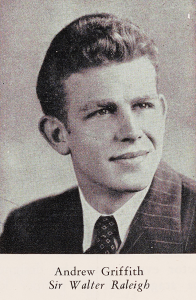
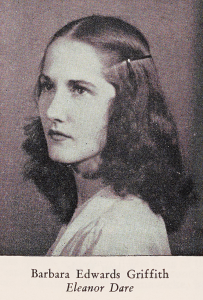 Of the many notable figures who have participated in the annual play season, one of the most recognizable and beloved is actor Andy Griffith. Griffith was born in Mount Airy, N.C. and acted in The Lost Colony for seven seasons (1947-1953), starring as Sir Walter Raleigh for the later five. He may have been the subject of one of the souvenir program’s best covers (1952), which is reused as a dedication to him in 2013 just after he died. In fact, Griffith is buried on Roanoke Island.
Of the many notable figures who have participated in the annual play season, one of the most recognizable and beloved is actor Andy Griffith. Griffith was born in Mount Airy, N.C. and acted in The Lost Colony for seven seasons (1947-1953), starring as Sir Walter Raleigh for the later five. He may have been the subject of one of the souvenir program’s best covers (1952), which is reused as a dedication to him in 2013 just after he died. In fact, Griffith is buried on Roanoke Island.
What makes these souvenir programs even more interesting is that Griffith’s first wife, Barbara Edwards, was also in a starring role of The Lost Colony for several years. She played Eleanor Dare, mother of Virginia Dare (famously said to be the first English child born in the Americas). Edwards Griffith was the first native North Carolinian to play the female lead and was “the most successful actress to portray the difficult role” thanks to her “excellent voice and splendid acting ability,” according to the 1953 program.
The two were married in 1949, one of the years when they co-starred in the play. They also both seem to have left the production at the same time after the 1953 season. Afterwards, they adopted two children and stayed together until 1972. During their relationship, in 1964, Edwards Griffith apparently appeared in one episode of The Andy Griffith Show as the character Sharon.
You can see the full collection of The Lost Colony souvenir programs here. To learn more about the Roanoke Island Historical Association, you can visit their partner page and their website.
On this day of thanks, the North Carolina Digital Heritage Center would like to extend a huge THANK YOU to our partners and site visitors for another phenomenal year. However you decide to observe the fourth Thursday in November, the NCDHC hopes that your day is filled with great food, remembrance, reflection and community.
________________________________________________
Thanks to funding from the State Library of North Carolina’s LSTA Grant and our partner, University of North Carolina at Chapel Hill, for additional issues of The Norlina Headlight which are now available to view on our website. This batch, spanning 1925 to 1927, brings DigitalNC’s total number of issues to 401.
If you’re looking for a new recipe to add to your table this week, the November 18, 1927 Thanksgiving issue of The Norlina Headlight has you covered. Fans of pineapple and ham on pizza should try Nellie Maxwell’s baked pineapple and ham recipe. Simply take a slice of baked pineapple and serve it with a helping of baked ham. If you prefer to have a sauce, however, Maxwell suggests mixing pineapple juice, ham liquor, and a bit of flour together to serve with your baked ham.
To learn more about the University of North Carolina at Chapel Hill, please visit their website.
To view all issues of The Norlina Headlight, please click here.
To view more newspapers from across North Carolina, please click here.
Six newspaper titles from the University of North Carolina at Chapel Hill have recently come out of copyright, meaning that they are now available digitally in our Newspapers of North Carolina collection. Geographically spanning the whole state, these titles come from as far east as Fairfield, west as Hayesville, north as Leaksville and Madison, and south as Maxton.
In the United States, copyright expires for some types of published materials a certain time period after their publication. In 2022, many materials published in the U. S. before 1927 are now out of copyright. Each year that boundary year moves forward by 1; in 2023 the boundary will be “published before 1928.” This is one of the reasons many sites like ours share a lot more materials published before that moving target. In addition, we have a workflow where certain types of publications from 1927-1963 undergo copyright review where we determine if they are likely to be out of copyright and low risk to publish online.
Because of the forward movement of the copyright boundary year and some other reasons related to fair use, we’ve been able to add the newspapers listed below to DigitalNC. These titles were also selected to help bolster representation of certain geographic areas on our site. In content, these issues feature many highlights, including descriptions of prohibition-era beer busts in Hayesville and a comical column of national news from Maxton.
The full list of titles includes:
You can browse all of our digital newspapers by location, type, and date in our North Carolina Newspapers collection. To learn more about UNC Chapel Hill’s collections, you can visit their partner page or their libraries’ website.

Thanks to our partner the Northampton County Museum, we now have three additional years of The Roanoke-Chowan Times. These issues, from 1926-1928, feature local news from Rich Square, Roxobel, Seaboard, Potecasi, and Kelford, N.C., as well as other nearby towns.
The hyper-local news sections from these issues is a big part of their charm. Often, the front page is divided into columns with the name of the town at the top. The news items range from newsworthy (as we would think of that term today) to the intimate. Here are three examples from the September 2, 1926 issue:
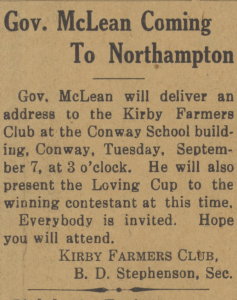
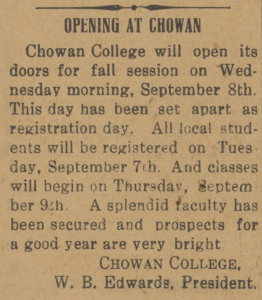
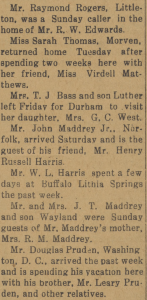
Although the personal items are fun to read in retrospect, it’s probably a relief that this kind of journalism is less common today.
Another interesting characteristic of this paper is it’s adoption of the first line of the North Carolina state song in its masthead: “Carolina, Carolina, heaven’s blessings attend her.” The paper speaks to the song’s widespread popularity in the state; the lyrics were written by North Carolina Supreme Court Judge William Gaston in 1835, but the song wasn’t officially adopted until 1927. The first instance in our records where the first line appears is in the April 23, 1903 issue—more than 20 years before it was made official.
This batch of papers is particularly exciting for us because it’s the first set of papers scanned on the new equipment at our satellite location, NCDHC East at Elizabeth City State University.
You can see all of our issues of The Roanoke-Chowan Times here and our entire collection of digitized newspapers in our North Carolina Newspapers collection. To learn more about the Northampton County Museum, you can visit their partner page or their website.














 Of the many notable figures who have participated in the annual play season, one of the most recognizable and beloved is actor
Of the many notable figures who have participated in the annual play season, one of the most recognizable and beloved is actor 
